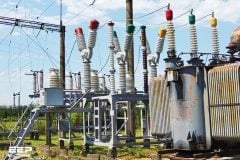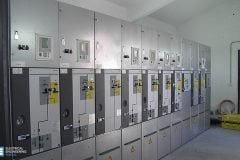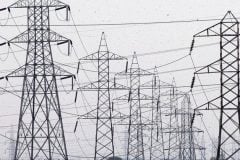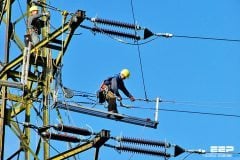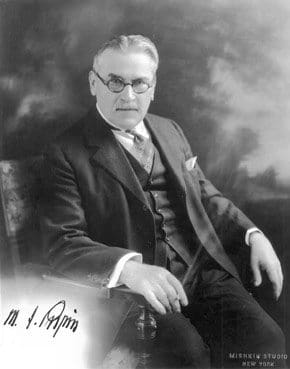
Mihailo (Mihailo Idvorsky) Pupin was born in Idvor, Banat, October 9, 1854. Received his academic education at Columbia College, New York, and his scientific education at the universities of Cambridge, England,and Berlin, Germany. Obtained his Ph.D. degree at the University of Berlin, and returned to Columbia University in 1889, to take a position as instructor in theoretical electrical engineering.
Has been professor at Columbia University since 1892, lecturing on mathematical physics. His earliest interest, when still as a student in Berlin, was in physical chemistry, and his doctor’ s dissertation “Osmotic Pressure and its Relation to Free Energy” related to this subject.
His position as instructor in the electrical theory gradually directed his interest to the study of electromagnetic phenomena. The subject of electrical resonance engaged his attention between 1892 and 1895, and resulted in the electrical tuning which is now universally applied in all radio work.
The patents for electrical tuning he sold to the Marconi Co. At the same time the Marconi Co. acquired his invention of the rectification of high frequency electrical waves. This invention is considered the basis of rectification now universally applied in radio.
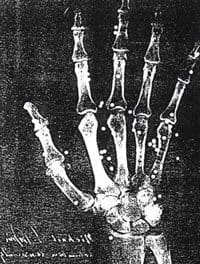
In April, 1896, he discovered the Secondary X-ray Radiation and is today credited with this discovery. Considering that secondary X-ray radiation is universally employed in the study of X-ray spectra, it is obvious that Pupin’ s discovery is a very important contribution to electron physics.
In February, 1896, he discovered a rapid method of X-ray photography which consisted in the interposition of a fluorescent screen between the object to be photographed and the photographic plate. This shortened the time of exposure from about an hour to a few seconds. This method of X-ray photography, originated by Pupin, is now in universal use.
For reasons which need not be mentioned here, Pupin was compelled in 1896 to give up X-ray work and he then devoted himself to the theory of telegraphic and telephonic transmission over conducting wires, and particularly over telephone cables. Transmission over telephone cables became a very important problem thirty years ago, because American cities had passed an ordinance demanding that all telephone conductors within city limits be placed underground.
Pupin solved this problem completely by proving mathematically and experimentally, that inductance coils placed in a cable at definite intervals, determined by the wave lengths which were to be transmitted, made the cable equivalent to overhead conductors of high inductance, and this diminished both distortion and attenuation.
In this connection Pupin developed the toroidal form of inductance coil without which the theoretical results would have had small practical value, because otherwise coils belonging to different telephonic circuits would have mutual inductance, and this would result in cross-talk.
A toroidal inductance coil has no external circuits. This type of telephone cable was developed by the Western Electric Co., in New York, and by Siemens-Halske of Berlin, and it revolutionised telephonic transmission.
Fourteen years ago the American Telephone and Telegraph Company, established telephinic communication between Boston – New York – Washington. Over a cable of this kind, and at that time this was the longest telephonic cable transmission in the world. It was 500 miles, or 800 kilometers long.
Today the distance has been indefinitely increas by the interposition of vacuum tube amplifiers. But it is admitted that without the inductance coils introduces according to Pupin’ s theory the vacuum tube amplifiers alone would make transmission over telephone cables impossible. The coils eliminate distortion, not only that due to enerqual reduction of amplitude of different frequencies, but also that due to different velcoties of propagation for different frequencies.
In the development of the inductance coils during the last twenty five years, Pupin was consulted by both the Western Electric Company and Siemens-Halske of Berlin.
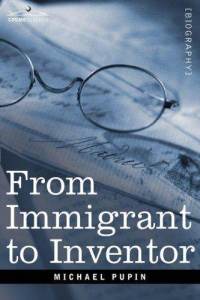
During the World War Pupin and his scientific committee were doing research work for the purpose of developing a system of submarine detection and a system of telephonic communication between aeroplanes. This work earned him a recognition from the late President Harding, which was expressed in Mr. Harding’s letter appering on page 386, of Pupin’s autobiography, “From Immigrant to Inventor”.
This autobiography enumerates at some length Pupin’s work, described by the writer briefly in the foregoing sketch; its correctness has never been questioned.
It should be mentioned here that in his essay of 1899, entitled “Transmission Over Non-Uniform Conductors”, Pupin gave the first mathematical treatment of electrical transmission over the so-called artificial lines and this theory is the foundation of the modern electrical filters used so much in telephonic, telegraphic and radio transmission.
During the last six years Pupin has been studying theoretically, as well as experimentally, electrical transmission over submarine cables, and has succeeded to extend Lord Kelvin’ s mathematical treatment of this subject. The result of this study is a new type of artificial line to be used in duplex working of submarine cables.
The theory and the experimental results have not yet been published, but will be published in the near future. A preliminary announcement was sent to the editorial committee in charge of the Volta Commemoration which took place at Como, Italy, in September 1927.

